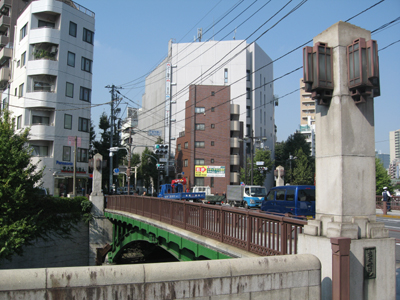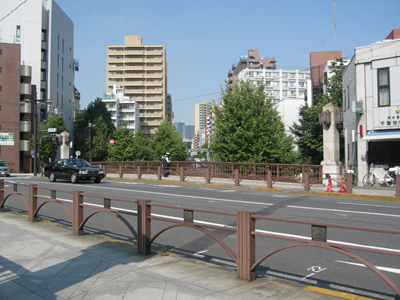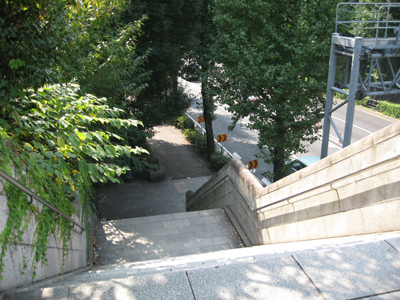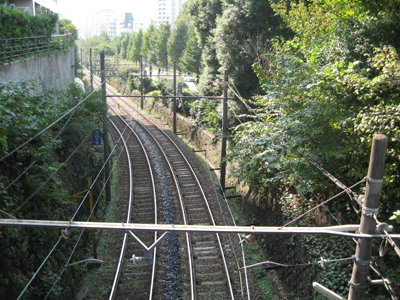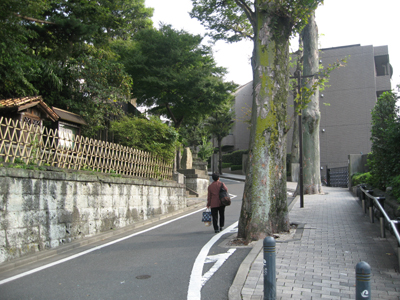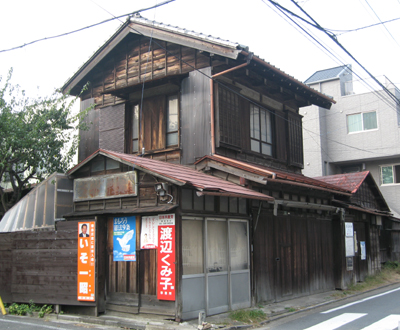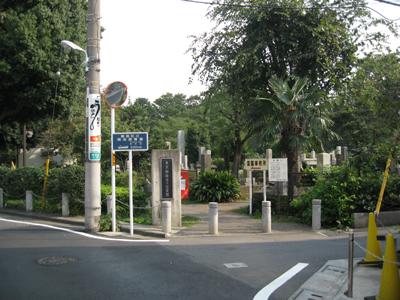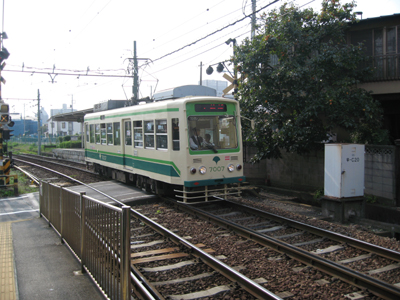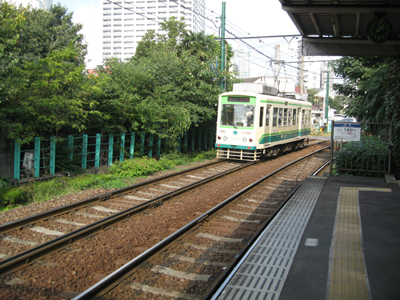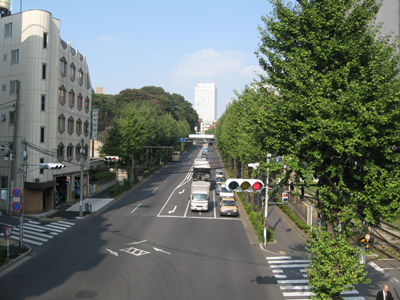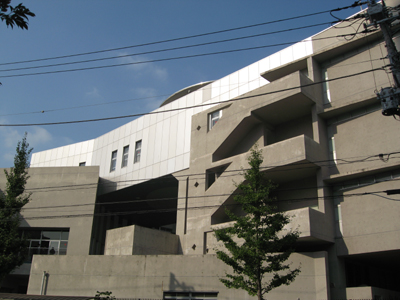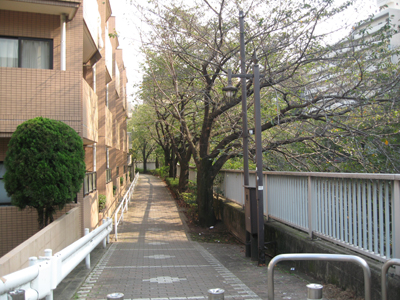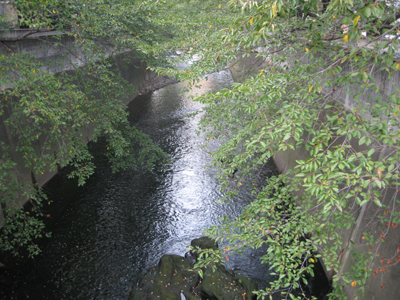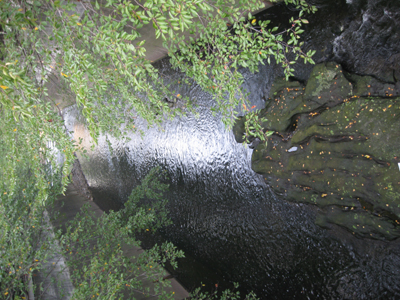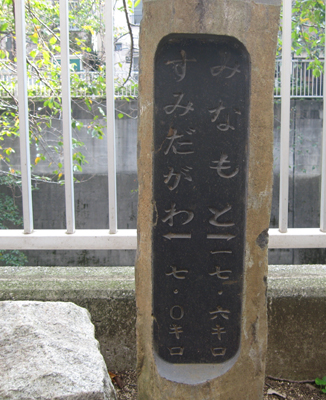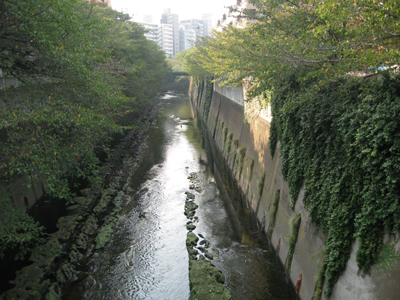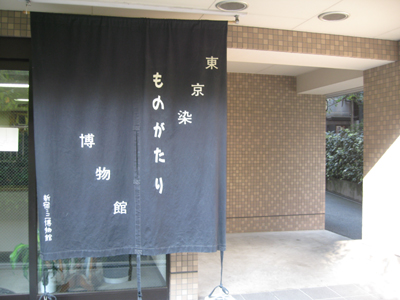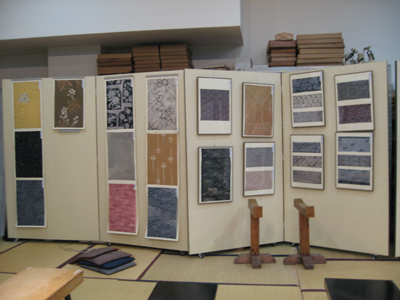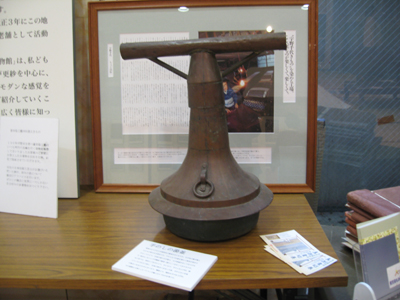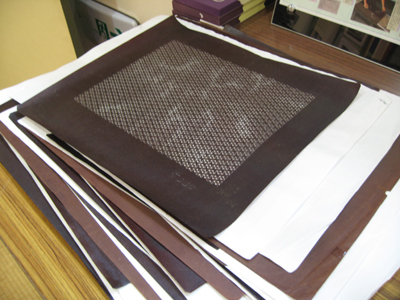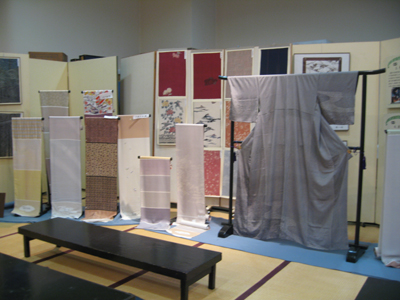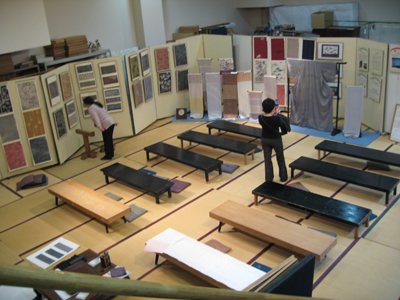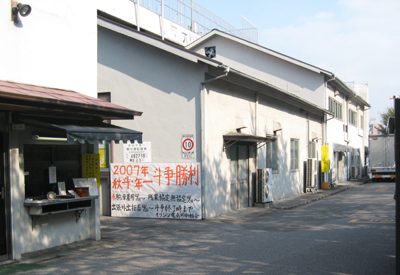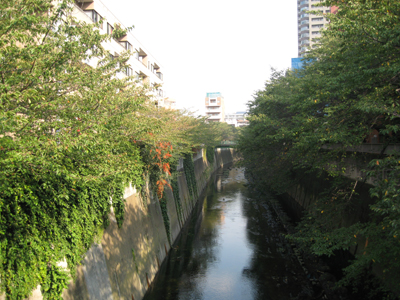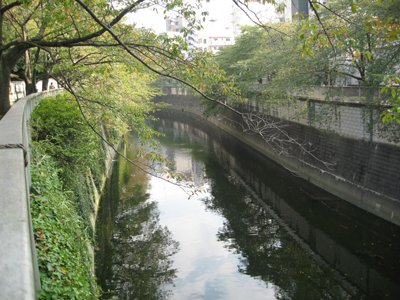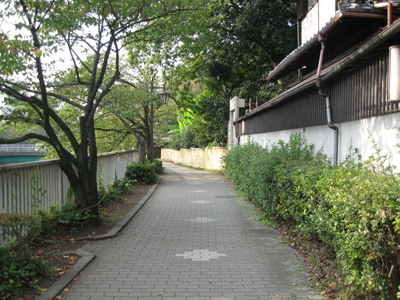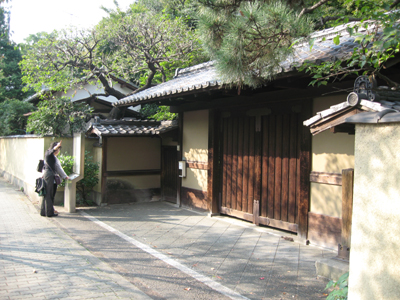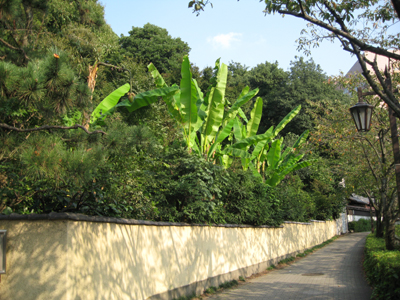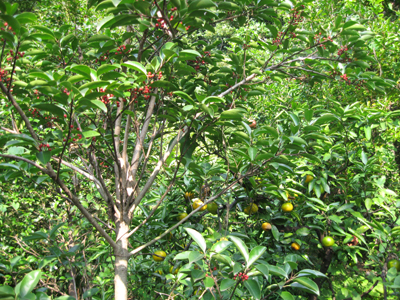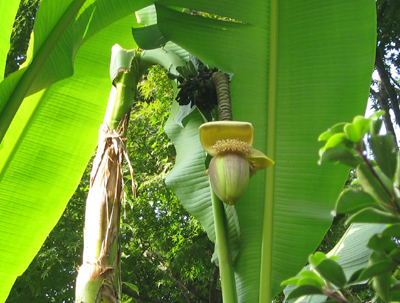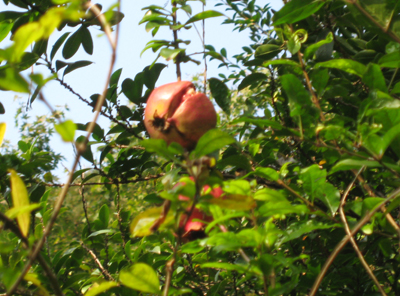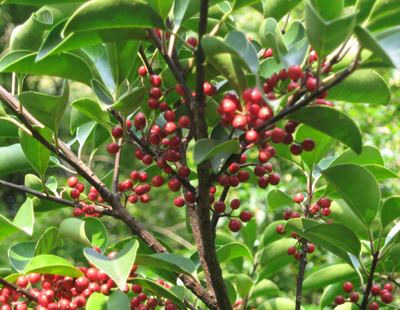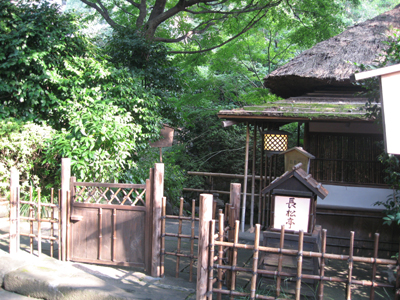|
秋日散策
Walking
in Autumn Ocotber 24, 2007 |
|
晴天に恵まれた秋日、かねてより散策を約束していたO, H, Kの三人が寄って目白界隈を歩いた。この土地で生まれ育ったOを案内役に、中学時代をこの土地で過ごしたK、活動的で好奇心に溢れるHと、道草や寄り道を重ねながらの愉快な道中となった。さして長い距離ではないけれど、江戸・東京の折々の歴史を刻む街角に興味は尽きない。久々に都電にも乗った。都心にありながら裏路地へ一筋入れば街の喧噪は遠く、コンクリートに固められた神田川を橋の上から覗き込めば両端から差し掛かる桜の枝葉が涼しい影を作り、川底の岩は意外に荒々しく野趣を残す。昭和30年代まではここで江戸更紗の水洗いが行われていたと聞き、反物の染色がこの土地の地場産業と知って新たな興味をそそられた。ゆっくり歩いているといろいろなことに出会う。最後は椿山荘内フォーシーズンズ・ホテルの喫茶室での優雅なアフタヌーン・ティーとなり、出発点の目白駅に戻った頃にははやくも秋の日は陰り始めていた。よい散歩だった。 One sunny autumn day, three of us, O, H, and K got together and took a walk, which we had been expecting so long. O served our guide, for K this is a place of her adolescence, and very active H has been interested in this area from her point of view. We talked a lot as we walked. Because there was no fixed route, we loitered around the town as we liked and we made a very pleasurable tour It was not a long course but many historically interesting corners of the area interested us so much. We even took the street car, Arakawa Line! Although the area is so close to the central part of Tokyo, back alleys were so quiet. When we looked in the concrete-covered banks of the River Kanda, which were overshadowed by leaves and branches of cherry trees gracefully, We were surprised at the wild river bottom. I learned for the first time that people had been washing clothes for Japanese traditional kimono in the process of dyeing in the river until the middle of 1960s, and also that the area has been famous for dyeing industry since Edo Era. It was amazing! I was so ignorant of that. (Other 2 have known it!) You learn a lot while you walk indeed. We ended our trip by sitting for the afternoon tea at the tea-room in Four Season's Hotel inside of Chinzanso Gardens. When we returned to Mejiro Station, the sun was already setting. We had a good walk really. |
|
豊島区目白。目白通りにかかる千登世橋。この下には明治通りと都電荒川線が走る。/Chitose- Bridge in Mejirodori Avenue, under which run Meiji-dori Avenue and Arakawa Line, the last treetcar of Tokyo. |
目白台千登世橋から池袋方面を望む。/A view toward Ikebukuro from Chitose-Bridge at Mejiro-dai. |
|
千登世橋から明治通りへ下る石段。/Stone steps from Chitose-Bridge down to Meijidori Avenue. |
千登世橋の下を走る都電荒川線の線路。/ This is the streetcar track, Arakawa Line is running under Chitose-Bridge. |
|
住宅街の中、雑司ヶ谷墓地へと続くケヤキ並木。/ In a residential area, a promenade is leading to Zoushigaya Cemetery. |
鬼子母神近くの日本家屋。扉を閉ざしているが、元は商店だったように見える。/ An old Japanese house whose doors are all closed. Was it a shop before? |
|
雑司ヶ谷墓地。漱石の墓を訪ねたかったが...。/ An entrance into Zoushigaya Cemetery. There are graves of famous people. |
都電雑司ヶ谷駅。都電はバスのようにワンマンカー。Suicaも使える。/ A streetcar is leaving Zoushigaya Station. |
|
都電は現役だ。昼下がり、乗客でいっぱいだった。/ Toden (the nickname of the streetcar) is very popular. It was crowded with passengers. |
都電「学習院下」駅付近。明治通りにかかる歩道橋から千登世橋方面を望む。正面は池袋のサンシャインビル。/ On Meiji-dori Avenue near Gakushuin-shita Stop of the streetcar, looking toward Chitose-Bridge, beyond which is Sunshine Building in Ikebukuro. |
|
「千登世橋中学校」(かつては豊島区立「高田中学校」だった。1960年代後半に私も通った。)Chitosebashi Junior High School, which was once called Takada Junior High, where I was going in 1960s. |
面影橋付近を流れる神田川沿いの遊歩道。/ A promenade going along the River Kanda near Omokage-Bridge. |
|
神田川の両岸から桜の枝が差し掛かる。/ From both sides of the banks branches and leaves of cherry trees are covering the river. |
川底の岩が露出している。水は意外にきれいだ。/ Rocks of the river bottom were showing. Water looked unexpectedly clean. |
|
途中分岐と合流を重ねるが、水源は三鷹市の井の頭公園にある。やがてこの水は隅田川に流れ込み、東京湾から太平洋に到る。/ The origin of the river is in Inokashira Park in Mitaka City. It runs into the River Sumida and finally into the Pacific. |
川はがっちりとコンクリートに固められているけれど、両岸の緑は濃く、都会に潤いある景観を与えている。/ Although the banks of the river is built with concrete, trees and grasses along it gives the river deep the shadow. The river creates pleasant landscape in the megalopolis. |
|
神田川の畔にある「東京染めものがたり博物館」。入場無料。/ By the river Kanda is "Museum of Tokyo Dyeing Story." Admission free. |
同博物館内部。染め柄を示す端布が屏風に展示されている。/ Inside of the museum. There are slips of cloths exhibited, showing the patterns of dyeing. |
|
噴霧器。/ A vaporizer for dyeing cloth. |
染色用手描き版画原版。/ Handmade printing patterns. |
|
江戸鮫小紋の着物を中心に、染め上がった反物が並ぶ。/ With " |
博物館の展示場。和服仕立て用座卓が並ぶ。ここで講習会も開かれる。/ Inside of the museum. The tables are for sewing workshops. |
|
博物館近くの会社。「秋闘・闘争勝利」のタテカン朱筆文字に目が釘付けになった。/ There was a company close to the museum, I was attracted to the red letters on the board crying for the victory of workers. |
陽の陰り始めた川岸。/ The sun is starting to set early in an autumn day. |
|
新江戸川公園付近を流れる神田川。/ The River Kanda running close to Shin-Edogawa park. |
このあたり、遊歩道に風情がある。/ The promenade is very attractive. |
|
目下閉館中の「関口芭蕉庵」。/ Sekiguchi-Bashou-An. Now closed. |
芭蕉庵庭園を廻る外塀。芭蕉の緑が清々しい。/ Trees of Musa basjoo are strikingly fresh inside of the walls surrounding Bashou-An. |
|
芭蕉庵の果樹。/ Fruit trees in Bashou-an. |
大きな芭蕉の花房。/ A huge flower of Musa basjoo. |
|
ザクロが実って弾けていた。/ Ripe pomegranate fruit. |
この赤い実は...。/ Red fruit of ...? |
|
椿山荘敷地内の「長松亭」(高級天麩羅レストラン)。/ A very expensive tempura restaurant at Chinzansou Gardens. |
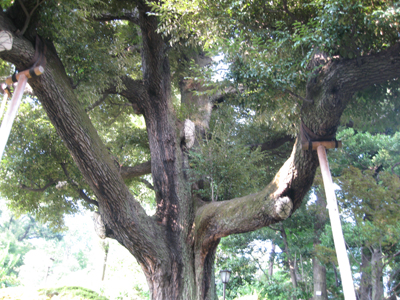
椿山荘内のシイの古木。/ An old tree of Castanopsis cuspidata var. sieboldii in the estate of Chinzansou Gardens. |
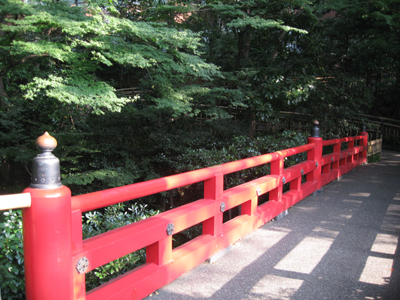
椿山荘内の朱塗りの橋。/ A bridge painted red in Chinzansou Gardens. |
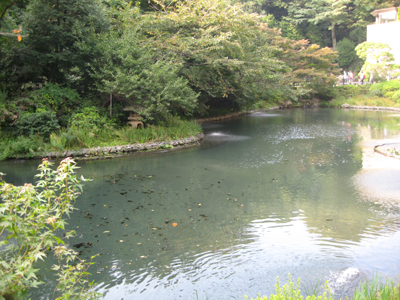
椿山荘内の池。/ A pond in Chinzansou Gardens. |
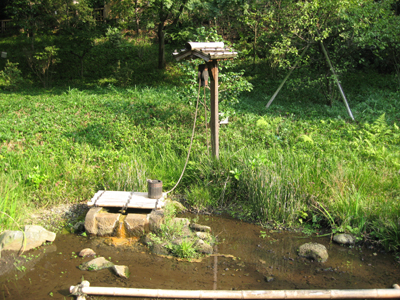
椿山荘内の古井戸。/ An old well in Chinzaansou Gardens. |
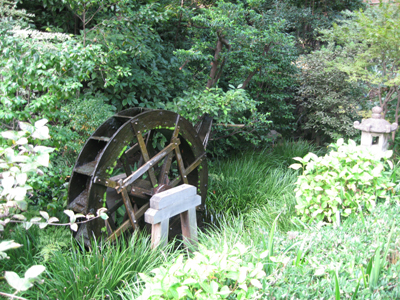
椿山荘内の水車。/ A water wheel in Chinzansou Gardens. |
同行者Ms O とMs H に心からの感謝をこめて。/ Many thanks to Ms O and Ms H for their company.
|
